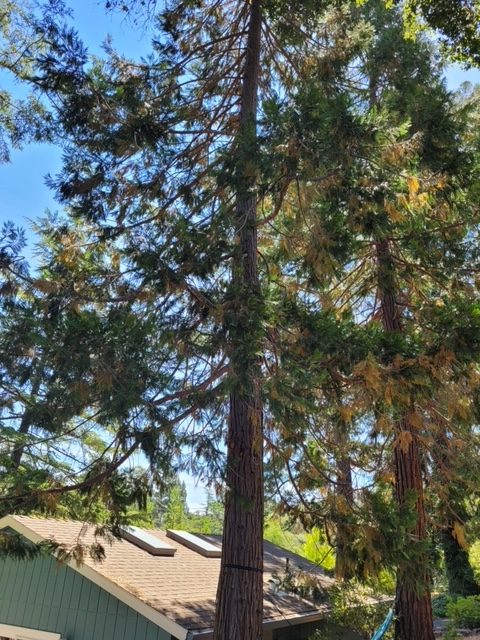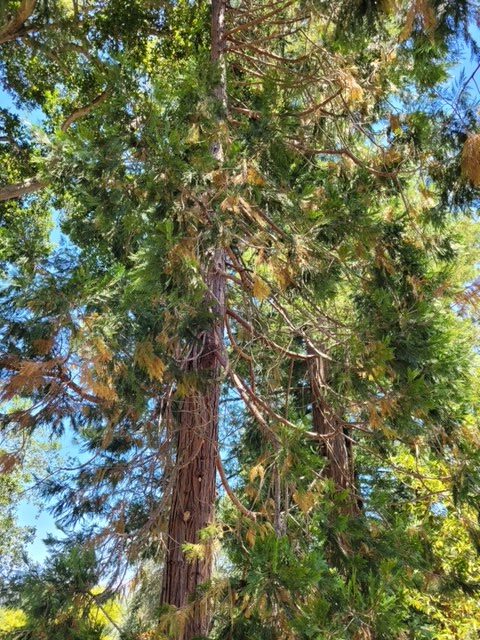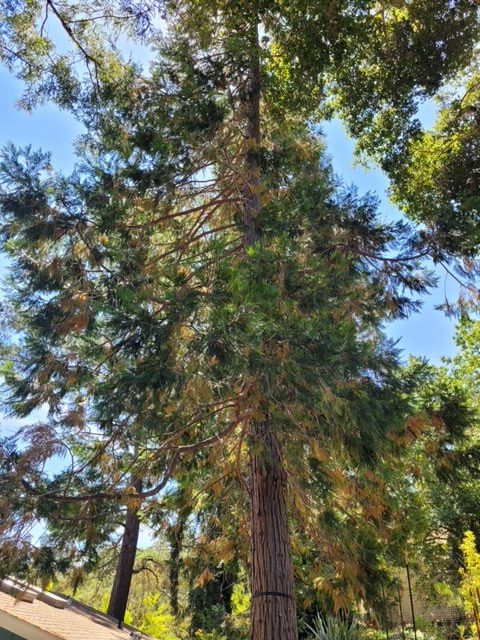Another drought? In California, it’s old news…again. It seems like we just made it through the last one.
 Here is our list of things to do proactively when a drought is here or on the way. At Image Tree Service in Windsor, CA our goal is to keep our clients informed about what’s right when the water gets tight.
Here is our list of things to do proactively when a drought is here or on the way. At Image Tree Service in Windsor, CA our goal is to keep our clients informed about what’s right when the water gets tight.
While we don’t normally worry too much about older, established trees, an extended drought can kill both young and old trees alike. At Image Tree Service, our job is to keep trees healthy and alive during a drought, something we have become very adept at over the years.
Unfortunately, a tree’s age is never a clear indicator of how well it will respond during a drought. In some cases, you won’t even notice the signs of drought stress in your more mature trees, as drought stress is first visible at the very top center part of the canopy which is out of view.
Our experience is that the best thing to do during an extended drought is to water your trees preventatively before you notice that your canopy is beginning to lose its foliage. Please Note: Be sure any watering you do is consistent with local watering restrictions.
Here are some no-no’s to avoid during a drought. These apply to both young and mature trees.
Bad Time to Fertilize: Fertilizing pulls water away from the roots and forces the tree to expend energy to properly process the fertilizer and can potentially become an additional stressor. It can also speed up the growth process, which means that that there will more tree to maintain. We all want our trees to grow, but it’s not suggested during a drought.
You’re in a No Digging Zone: Digging underneath the canopy during a drought can seriously damage the roots and reduce the tree’s capacity to absorb water.
Special Considerations for Young Trees
Young trees (two years or younger) don’t have an extensive root system and may be more vulnerable to drought stress. When looking for drought damage, look for signs of leaf drop, yellowing foliage, brown foliage, wilted leaves, or dead branches at the top of the canopy.
 Remember, while mulch is usually good for retaining moisture in the soil, it also can prevent water from soaking down into the roots systems of your trees. Whenever you water your trees, be certain to remove the mulch from the top of the root ball and away from the tree. You’ll want to apply about five gallons of water for every inch of trunk diameter to the top of the root ball and the surrounding soil.
Remember, while mulch is usually good for retaining moisture in the soil, it also can prevent water from soaking down into the roots systems of your trees. Whenever you water your trees, be certain to remove the mulch from the top of the root ball and away from the tree. You’ll want to apply about five gallons of water for every inch of trunk diameter to the top of the root ball and the surrounding soil.
You’re Never Out of the Woods with Mature Trees
Tree experts from organizations such as the Tree Care Industry Association (TCIA) say that we don’t need to worry about watering large, mature trees because they seem so be stable and constant—and it’s generally true.
However, many types of trees such as wetland trees, fruit trees, and other types are affected more by drought stress. Since tree damage can be difficult to see, the people at TCIA suggest that you water your tree during a severe drought, whether there is visible damage or not.
When watering mature trees, you should add enough water to wet the top 12 inches of soil. In sandy soil, you should add a full inch of water. Some people suggest using tuna or other similar cans placed in the sprinkler’s path to measure. This extra watering should be performed every two to four weeks during a drought.
Tips on Helping Your Fruit Trees During Drought
Almonds, figs and olives are the most tolerant of drought, so if you have any of those, don’t fret—quite yet. Apples, apricots, cherries, pears, and prunes are all somewhat drought-tolerant. Nectarines, peaches and citrus are most dependent on a sufficient supply of water. Removing most or all of the fruit from apples, pears, peaches, nectarines, plums (prunes) and other citrus trees can help the trees to survive a very dry year by using about 20 to 30 percent less water.
 In addition, fruit thinning also will improve the size of the remaining fruit. This is especially true of varieties that ripen late in the season. Removing the fruit from olives, almonds, or walnuts, however, doesn’t cause much of a reaction in the plant and saves little or no water. Modest branch thinning and no topping cuts during the dormant season is the best for fruit trees. Some water can also be saved by summer pruning in May, which is thinning out and topping branches when they have leaves on them. This reduces total leaf area and reduces water use somewhat as well.
In addition, fruit thinning also will improve the size of the remaining fruit. This is especially true of varieties that ripen late in the season. Removing the fruit from olives, almonds, or walnuts, however, doesn’t cause much of a reaction in the plant and saves little or no water. Modest branch thinning and no topping cuts during the dormant season is the best for fruit trees. Some water can also be saved by summer pruning in May, which is thinning out and topping branches when they have leaves on them. This reduces total leaf area and reduces water use somewhat as well.
Adhere to the do’s and stay clear of the don’ts when it comes to pruning your trees during a drought. If you encounter anything and you don’t know the answers, we can help. At Image Tree Service in Windsor, CA, we have been through our share of droughts over the years, so tap into our vast reservoir of knowledge to keep your trees alive and healthy during a drought.
Sources: TCIA, UC Davis, and Wikipedia

